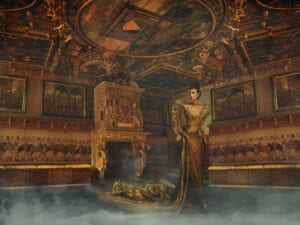From a casual glance at the advertising for Conflict, Time, Photography you might assume it to be an exhibition of war photojournalism; in fact the concept is far more novel. The images on display show the aftermath (rather than the unfolding of) the conflicts they depict.
Each successive room is dedicated to aftermaths – the gap between event and photograph – in increasing increments of time. The first room shows ‘Moments Later’, the second ‘Days and Weeks Later’, the fourth ‘1 to 10 years Later’ and so on. The photography in the final room records places and objects relating to conflicts 85 to 100 years after they have occurred.
The photography in the first few rooms comes closest to conventional photojournalism. In this category Roger Fenton’s photographs of the cannonball-littered landscapes of the Crimean war and Pierre Antony Thouret’s images of World War I battlefields (made for a tourist guide published in 1919 when, unbelievably, there was a market for such things) are interesting historical records. Photographs in the later rooms have a less literal relationship with the wars they record.
Both Simon Norfolk’s Afghanistan: Chronotopia and Sophie Ristelhueber’s Fait (taken after the first Gulf War) depict desolate landscapes strewn with defunct military hardware. The thirty-nine photographs comprising Ristelhueber’s Fait show various scenes from Iraq’s blasted and trench-wracked deserts. They are all depopulated and arranged to juxtapose close-up and long-range shots of the detritus of conflict.
Here the real subject (allied invasions of Iraq and Afghanistan) is alluded to through absence – a concept that is reiterated in all the photographs in the second half of the exhibition. Increasingly the captions that adjoin the images are fundamental, even though they are generally set at the far end of each room.
Jane and Louis Wilson’s Azeville, Urville and Biville from 2006 document the monolithic bunkers deployed along the French coast by Nazi Germany. The proto-brutalist structures, displayed on a large format and in grainy black and white, brood over the rooms that contain them. Taryn Simon’s A Living Man Declared Dead Chapter XI works in a very different way.
Her piece is about Hans Frank, who was Adolf Hitler’s personal legal advisor and Governor-General of Poland during its occupation. Frank was executed after the Nuremberg trials for his role in the holocaust, so Simon has photographed his descendants and arranged them on the left hand of a diptych (blank spaces appear where the family members refused to be photographed). The right half of the piece contains various mementos and texts relating to Frank’s insalubrious career.
Simon’s artwork depends fundamentally on the explanatory caption that sits beside it: and this highlights one of the flaws of the exhibition. With the images in the first rooms where the instantaneous after-effects of attacks are depicted, the context is contained within the images. With the photographs towards the end of the exhibition the impact of war on people and places is much less obvious – explication becomes necessary, and sadly the images cease to work purely on their own merit as images.
Matthew Wilson
Conflict, Time, Photography, until 15 March, Tate Modern, Bankside, London, SE1 9TG. For more information visit www.tate.org.uk.
Follow us on Twitter @AestheticaMag for the latest news in contemporary art and culture.
Credits
1. An My-Le, Vietnam 1994-8.





